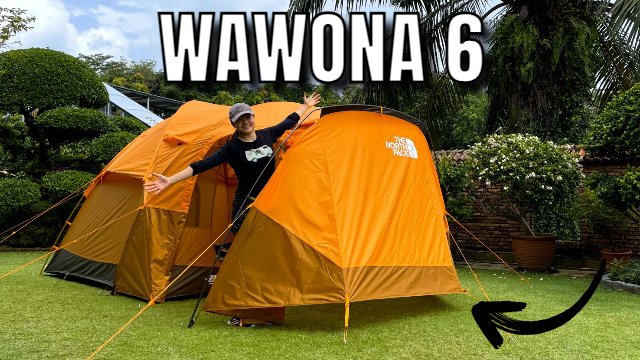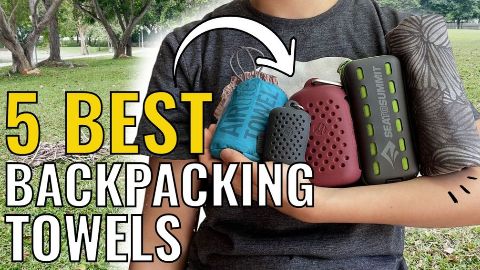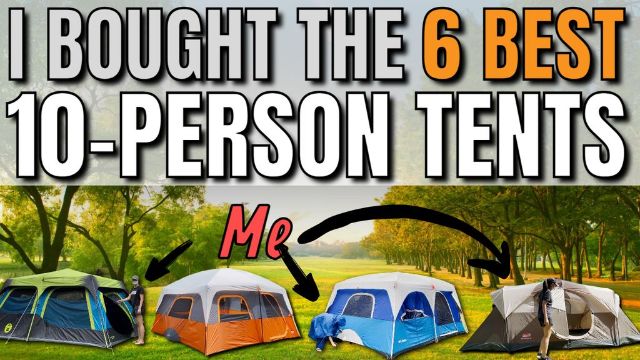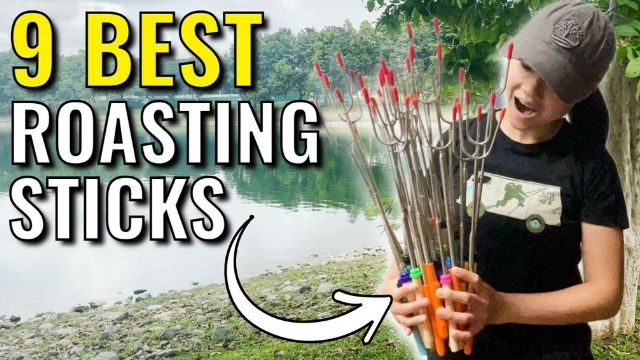The 5 Best Waterproof Tents for Heavy Rain (Bought & Tested!)
I’ve tested over 30 camping tents in the rain, and only 5 of them did great. Here are the 5 best waterproof tents for heavy rain:
The North Face Wawona
REI Co-Op Base Camp
REI Co-Op Wonderland
Teton Sports Mountain Ultra
Quechua 2 Seconds
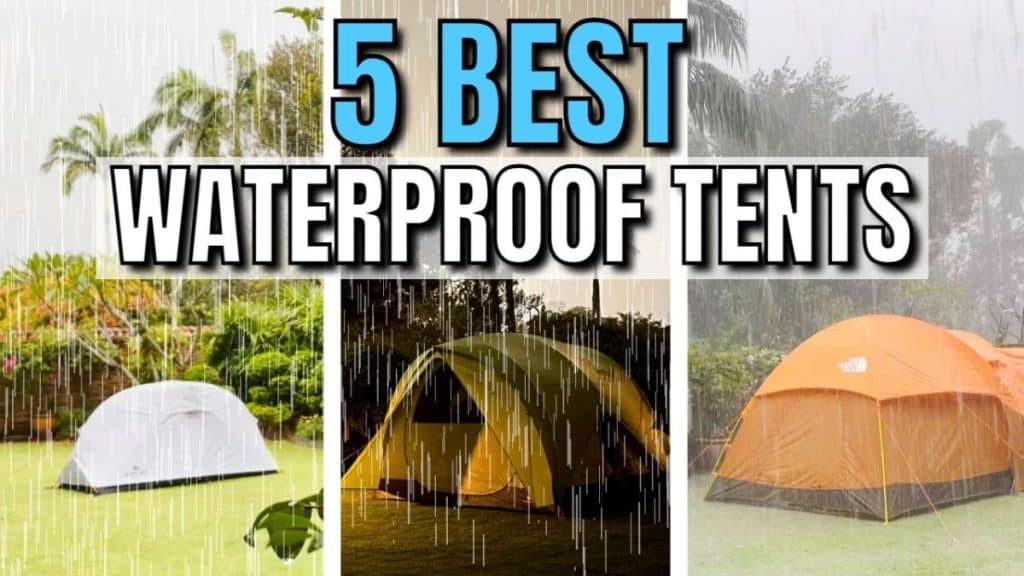
Best Waterproof Tents – Quick Summary
This page contains affiliate links, and that means that I may earn a commission if you buy something, at no extra cost to you. You can find my full disclosure policy here.
Here’s a quick summary of all the waterproof tents that I recommend:
| Tent | Recommendation | Score | Price |
|---|---|---|---|
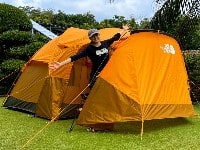 |
OVERALL BEST The North Face Wawona 6
|
||
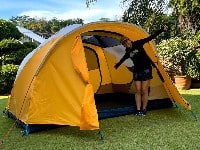 |
BEST FOR OFF-SEASON REI Co-Op Base Camp 6
|
||
 |
BEST CABIN TENT REI Co-Op Wonderland 6
|
||
 |
BEST BUDGET PICK Teton Sports Mountain Ultra 2
|
||
 |
BEST POP UP TENT Quechua 2 Seconds Fresh and Black
|
These 5 waterproof tents set me back by more than $1,500 (yes, I actually buy all my tents with my own savings), and I also spent more than 1 month testing all these tents out.
If you prefer watching to reading, you can check out my YouTube video right here:
But if you prefer reading, I’ll take you through all my more detailed recommendations right now.
- Best Waterproof Tents – Quick Summary
- 1. The North Face Wawona 6 (Overall Best Waterproof Tent)
- 2. REI Co-Op Base Camp 6 (Runner-Up Waterproof Tent)
- 3. REI Co-Op Wonderland 6 (Best Waterproof Cabin Tent)
- 4. Teton Sports Mountain Ultra 2 (Best Budget Camping and Backpacking Waterproof Tent)
- 5. Quechua 2 Seconds Fresh and Black 3 (Best Waterproof Pop Up Tent/Instant Tent)
- How to Pick the Best Waterproof Tent for Yourself
- Frequently Asked Questions (FAQs)
- Why You Can Trust Me
1. The North Face Wawona 6 (Overall Best Waterproof Tent)
Key Info
Hydrostatic head rating: 1,500mm (floor), 1,200mm (tent body and rain fly)
Peak height: 77 inches
Interior base area: 75.7 square feet
Vestibule area: 51.0 square feet
Set up timing (1P): 20 minutes
Weight: 19.4lbs.
Pros and Cons
Summary
My heavy rain test with The North Face Wawona 6 lasted a whopping 3 days. It rained so heavily that my entire yard completely flooded, every single day.
The water was up to my ankles, and I also noticed that the entire tent floor of my Wawona was sitting in 2 inches of water.
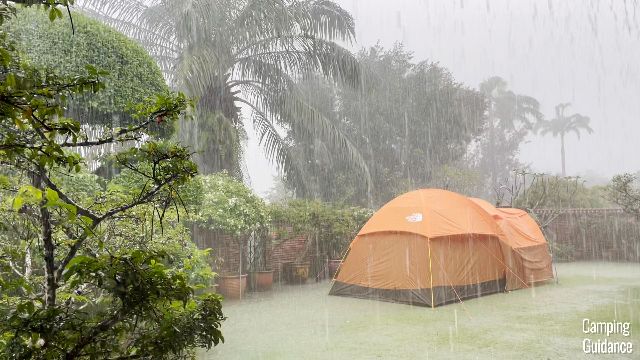
But after the 3 days of heavy rain and flooding, I didn’t find a single drop of water inside the tent.
Even the seams at the corners, which were completely submerged in water, didn’t leak at all.
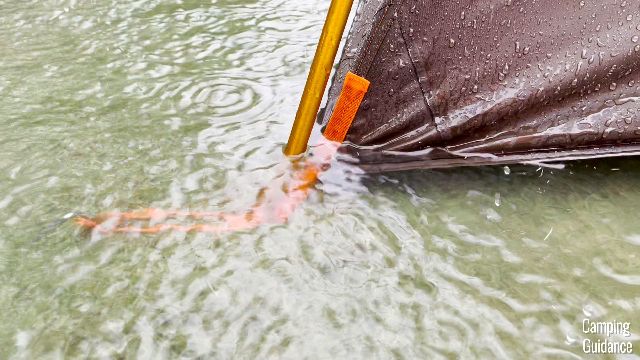
And that’s because the seam taping all around this tent was very thorough. Every single seam not covered by the rainfly was perfectly taped, and I didn’t have to do any waterproofing prep work on my own. I could literally use my Wawona out of the box.
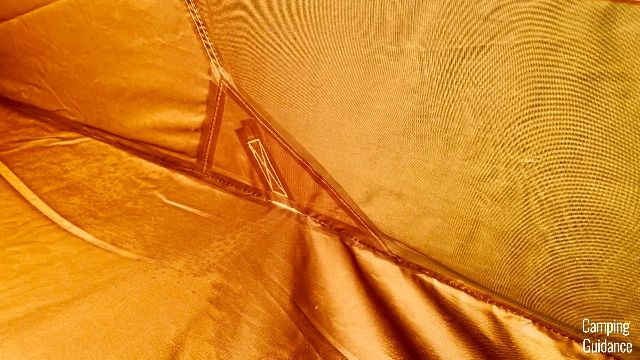
Take note that after the third day of rain though, I noticed that the back wall was slightly damp from the inside. It didn’t drip into the tent or anything, but my hand was slightly damp from touching the wall. So, this is the breaking point of the Wawona.
Another of the biggest reasons I’m recommending the Wawona as one of the best waterproof tents is because of its humongous vestibule, the biggest I’ve ever seen in a family camping tent.
This single vestibule comes in at a whopping 51 square feet, and could fit not just a couple of huge camping chairs, but it even has enough space leftover for a big camping table as well. This is simply perfect for storing wet gear and dirty shoes on rainy days.
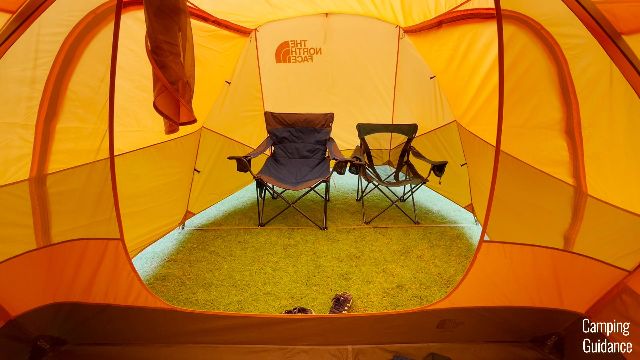
On top of that, the peak height in the vestibule is 74 inches, the lowest height is still a whopping 65 inches, and I could stand up everywhere inside the entire vestibule.

The Wawona also has the best wind protection of any family camping tent I’ve ever tested over the last 4 years.
My friend had the previous version of the Wawona (the single-walled model), and took his tent through 50mph winds. The high quality DAC MX poles bent a little bit after that, but are still going strong. You can see the ‘damage’ here:

I also managed to put my own Wawona (the newer double-walled version) through 15mph winds, and it held up perfectly fine without a single hitch.
That’s because it comes in a nice aerodynamic dome-shape, it has a whopping 11 guylines, plus the highest quality DAC MX aluminum poles, so naturally it’s the best against wind. Check out how it compares to the other waterproof car camping tents in this review:
| Waterproof Tent | Tent Shape | Guylines | Poles |
|---|---|---|---|
| The North Face Wawona 6 | Dome | 11 | DAC MX |
| REI Base Camp 6 | Dome | 6 | Aluminum |
| REI Wonderland 6 | Cabin | 14 | Aluminum |
However, I would have really liked the Wawona to have a longer rainfly. Right now, it covers only half the tent body. If it had a longer fly, I think it could easily have gone a week in pouring rain without a single leak through the tent fabric.
Another thing that could have been improved in the Wawona is the user-friendliness of the 2 side windows and also the 2 side vents, there’s 1 of each on each side of the tent. These cannot be opened from the inside, which I didn’t like, but thankfully, none of them leaked at all even in such heavy rain.
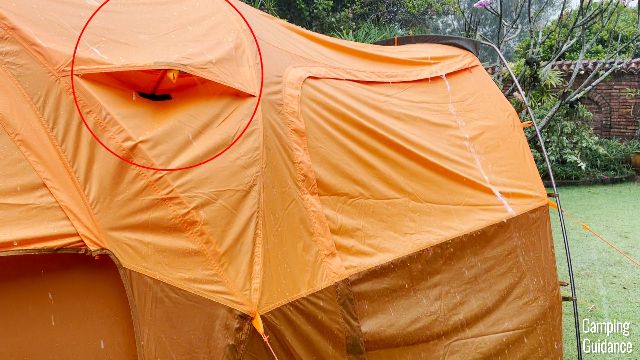
But overall, if you’re looking for a car camping or family camping tent for your next camping trip, The North Face Wawona 6 is easily the best waterproof tent that I have for heavy rain and strong winds.
The insane pros of this tent far outweigh the minor cons, and I have really enjoyed my time and testing with it.
Check out the Wawona 6:
2. REI Co-Op Base Camp 6 (Runner-Up Waterproof Tent)
Key Info
Peak height: 73 inches
Interior base area: 82.5 square feet
Vestibule area: 52.4 square feet
Set up timing (1P): 17.5 minutes
Weight: 20.6lbs.
Pros and Cons
Summary
The next waterproof family tent is the REI Base Camp 6. It has so much more fabric than mesh, so that’s why this tent is also my Best Shoulder-Season Tent for Heavy Rain. (The Wawona, on the other hand, is a three-season tent.)
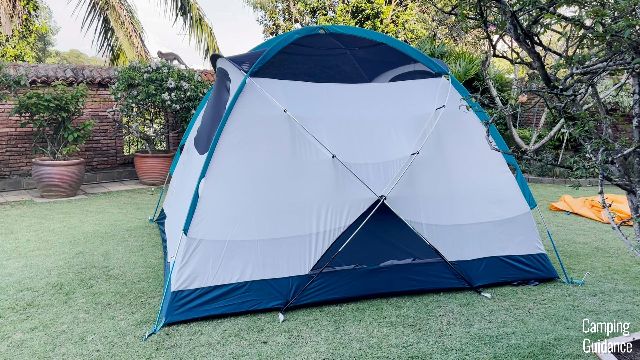
There are 4 main reasons why I love this tent too.
First, it has a full-length rainfly that extends almost all the way down to the ground.
So, even when I sprayed tons of water on my Base Camp for one full hour, the rainfly protected the inner tent body really well. The water dripped off the rainfly and onto the ground directly, without touching the inner body too much, and the tent stayed completely dry.
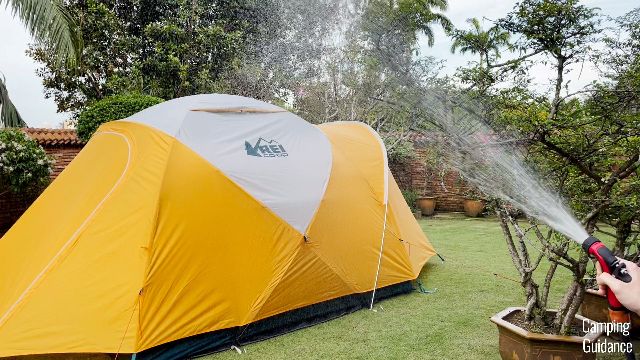
Second, the Base Camp has a whopping 4 vents, 2 of them are roof vents, and the other 2 are floor vents, and I really loved that I could open and shut all these vents from the inside of the tent.
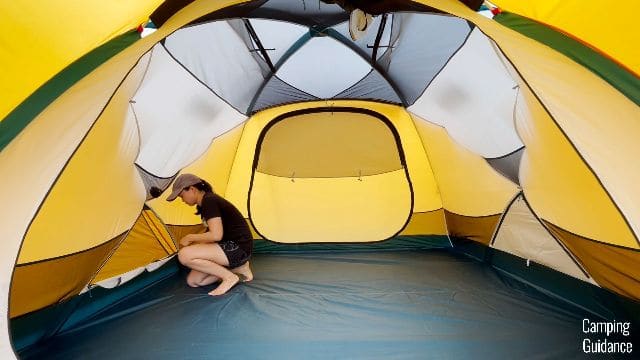

The placement of all 4 vents also help create what REI called a ‘chimney effect’, for more efficient ventilation. I have never had any condensation issues in this tent so far, so I suppose it must work.
Third, this Base Camp has a whopping 2 vestibules, more than most other family tents I’ve seen.
The front vestibule area is pretty big, coming in at about 31.1 square feet, and this can easily fit 2 camping chairs, no problem at all.

The back vestibule is much smaller though, and couldn’t even fit 1 chair. It does have a base area of about 21.3 square feet though, so this back vestibule is great for storing wet gear.

And fourth, I love the mountaineering-inspired crisscross pole design of the Base Camp. Generally, the more poles that criss-cross across the tent, and the more pole-ends that touch the ground, the better the tent will be against wind.
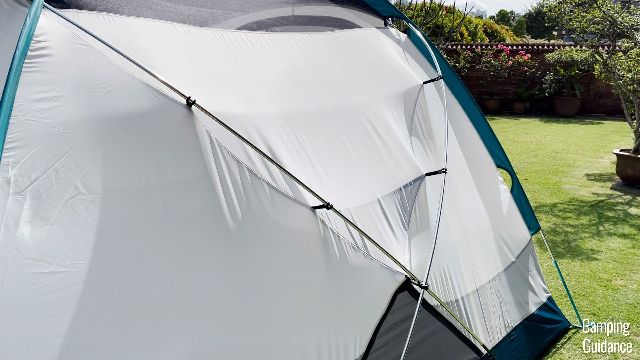
And the Base Camp has a whopping 5 poles. It’s much more stable than a simple dome tent with just 2 crisscrossing poles (like the Coleman Sundome!), and it also pulled the tent fabric outwards to increase my livability inside the tent.

Overall, this is a really bomb-proof off-season family tent.
Check out the Base Camp 6:
3. REI Co-Op Wonderland 6 (Best Waterproof Cabin Tent)
Key Info
Peak height (center): 81 inches
Lowest height: 76 inches
Interior base area: 82.5 square feet
Vestibule area: None (unless you buy the additional mudrooms)
Set up timing (1P): 19.5 minutes
Weight: 23.6lbs.
Pros and Cons
Summary
I don’t typically recommend cabin tents if you’re going to be camping in heavy rains and strong winds, but if you absolutely need a cabin tent, the best one I’ve tested so far is the REI Wonderland 6.
It is an absolutely cavernous tent, and is easily the most livable 6-person tent I’ve ever tested. Its center peak height comes in at about 81 inches, and looks like this:
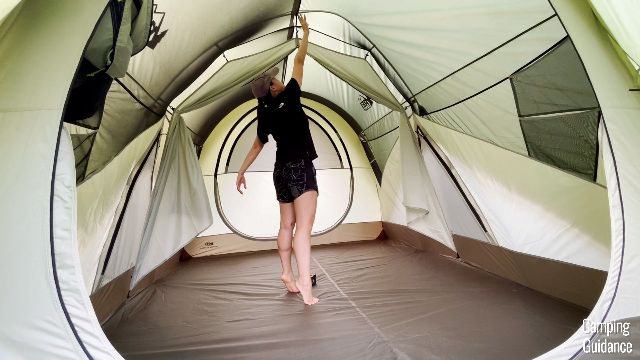
On top of that, it has a super impressive lowest height at its 2 left and right sides, coming in at a whopping 76 inches:

So, basically, I got the peak height (give or take a few inches) across the entire length of this Wonderland.
I also really liked that my Wonderland has a mind-boggling number of guylines, coming in at a whopping 14 guylines. There’s literally no other tent I’ve tested so far with more guylines.
This should give you a decent amount of wind protection, despite the vertical walls of the Wonderland catching wind quite easily.
Now, why do I not typically recommend cabin tents for heavy rain?
Well, most cabin tents I’ve ever tested has really small rainflies, covering only the very top of the tent. Some cover a little more of the tent, but some are absolutely tiny, and it’s extremely rare to find a cabin tent with a full coverage rainfly.
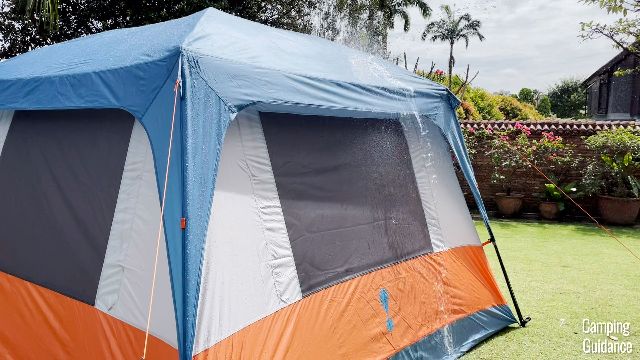
So far, the Wonderland has the longest rainfly of all the cabin tents I’ve tested for now, extending all the way down to the ground for the most part.
But the thing is, there’s this small gap in the rainfly in the middle, and that’s to cater for the bottom triangle windows.
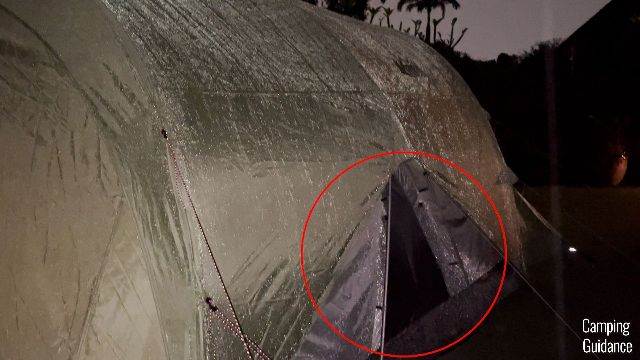
So, because of this, after I put the Wonderland through 1 hour of heavy rain, followed by a few hours of moderate rain after, so basically one entire night of raining, there were 2 drops of water in the tent, from the divider loops at the bottom.
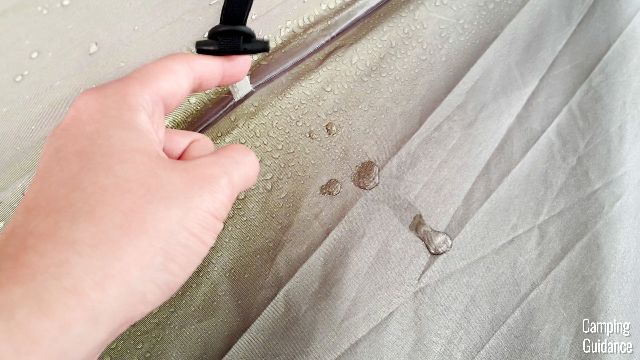
As far as cabin tents go though, this is the best result I’ve seen so far. My other cabin tents had way more leaking than this.
I think REI might have goofed on these loops, cos they weren’t waterproofed, so once you get that sealed, there should be no leaking.
Luckily, the rest of this Wonderland was extremely thoroughly seam taped, I didn’t find any other issues.

My Wonderland didn’t come with any vestibules though, but you can buy 1 or even 2 of these separate mud rooms, but of course that’s an extra cost.
And while the Wonderland has so much mesh for tons of ventilation on hot summer days, its rainy day vents are absolutely tiny, just the size of my hand.
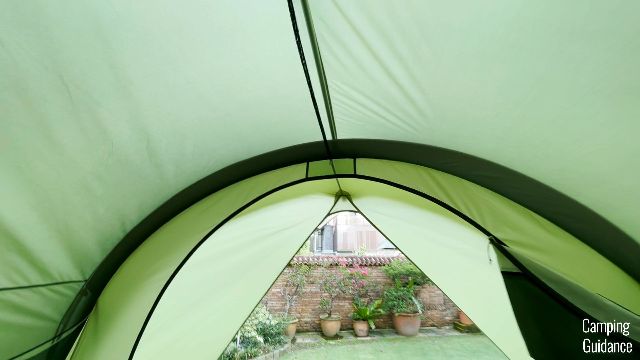
To be honest, I didn’t feel like they did very much, I could always feel the hot air stuck at the top of the tent, and there isn’t much of a ‘chimney venting effect’ like in the Base Camp (above).
I’ve said it before, and I’ll say it again, I don’t recommend cabin tents for heavy rains and strong winds. But if you really need one, the REI Wonderland 6 has been my best bet so far. But only if you absolutely need one.
Check out the Wonderland 6:
4. Teton Sports Mountain Ultra 2 (Best Budget Camping and Backpacking Waterproof Tent)
Key Info
Peak height: 44 inches
Interior base area: 34.3 square feet
Vestibule area: 14.1 square feet
Set up timing (1P): 6.5 minutes
Weight: 6.4lbs.
Pros and Cons
Summary
If you’re looking for an affordable 1 to 4-person tent for heavy rain, there’s no better pick than the Teton Sports Mountain Ultra.
Due to the weight, this is more of a car camping tent rather than a backpacking tent, but you can use this as a backpacking tent for short trips if you really need to.
I put this tent through 1 hour of heavy rain, and after that, the rain became more of a light to moderate rain. This continued for many hours, way into the night, and it was still raining the next morning.

The rain finally stopped after 12 hours, and I found that there was not a single drop of water inside the tent.
I really loved that this tent has a full-length rainfly, which extends almost all the way down to the ground. There’s only a little gap at the bottom for some ventilation.

Also, every single seam in this tent has been very thoroughly taped, especially at the corners. After my rain test, I checked all the seams, and none of them let in a single drop of water.
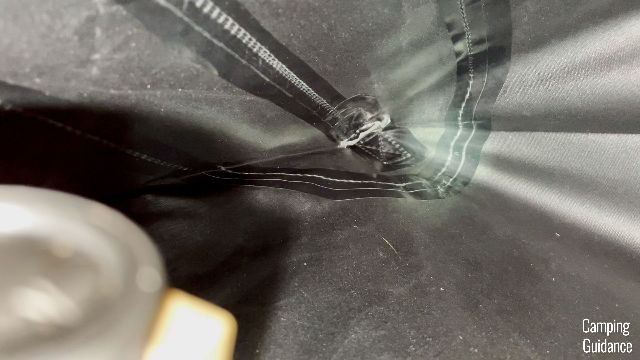
The tub floor height all around the tent was also perfect to prevent any back-splashing during the heavy rain. After the heavy rain test, I lifted the rainfly up, and take a look at the tent body. Notice that the height of the tub floor, which measured about 10 inches at the width, was more than enough to prevent water getting into the tent?

On the other hand, most of the other budget camping and backpacking tents that I’ve tested tend to have a lower tub floor (between 5-7 inches at the width), which allows water and dirt into the tent during back-splashing. That’s not a pleasant situation to be in.
And on top of the 34.3 square feet of inner tent space (which can fit up to a queen bed), I also got 2 huge vestibules, which gave me an additional 14.1 square feet of vestibule space together, for a whopping 48.4 square feet of space in total.
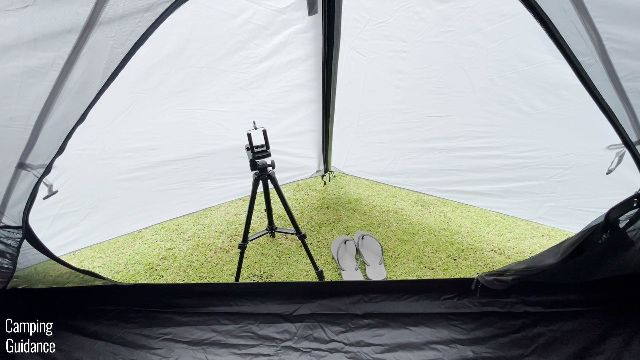
However, the 2 rainfly vents at the top of the tent can be accessed only from the outside, and the angle of the vent tends to let in water, so I’d recommend just keeping them closed if you expect any rain.
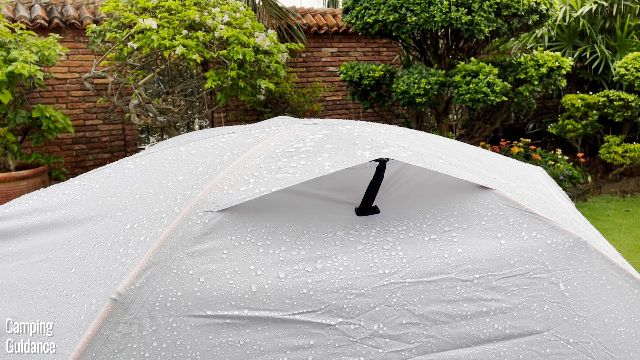
Thankfully, there are 2 more vestibule vents (1 vent in each vestibule), and I could open and shut these from the inside of the tent.

Pro-Tip: If you can spare the weight and slight extra cost, I would recommend the Mountain Ultra 2 over the Mountain Ultra 1. The 2P model’s rainfly can be pulled away at the widths of the tent, creating 360-degree ventilation all around. The one-person tent cannot be pulled away at the widths.
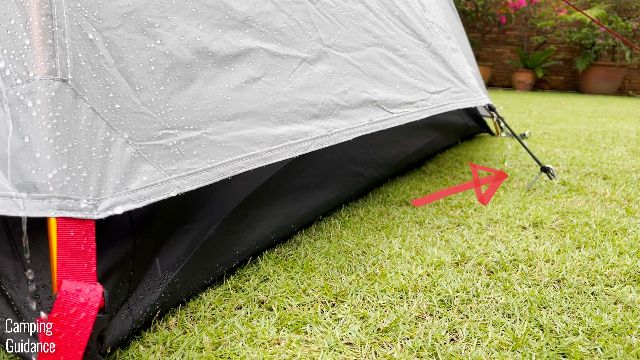
Check out the Mountain Ultra:
5. Quechua 2 Seconds Fresh and Black 3 (Best Waterproof Pop Up Tent/Instant Tent)
Key Info (for the 2P I tested)
Peak height: 38 inches
Interior base area: 28.7 square feet
Vestibule area: None
Set up timing (1P): 3 minutes
Weight: 7.2lbs.
Pros and Cons
Summary
If you’re looking for an easy setup tent, I’ve tested over 10 different instant and popup tents, and I found that the Quechua 2 Seconds are easily the best in rain.
I have both the regular and the Fresh and Black model (take note that I’m only recommending the latter here), and I was able to put them through not just a 1-hour heavy rain test, not just some light flooding in my yard, but also a 3-day heavy afternoon rain test.

And wow, these tents were surprisingly bomb-proof, for three main reasons.
First, both tents have full-length rainflies, covering the entire inner tent.
These tents may seem like single-walled tents, but they’re not. There’s two layers to this tent. The outer layer is the rainfly, and the inner layer is a polyester layer, completely separate from the rainfly layer, which keeps your tent bone dry even in heavy rain.
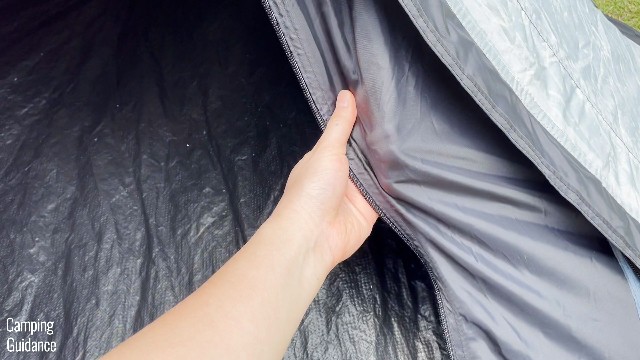
Second, the seam taping is really thorough in this tent. All the important seams, like those on the flooring, have been factory taped.

And third, we’re going to discuss about ventilation, and here’s why I recommend the Fresh and Black over the regular model.
The regular 2 Seconds model is pretty bad when it comes to ventilation, with only 1 rear vent that doesn’t do all that much.
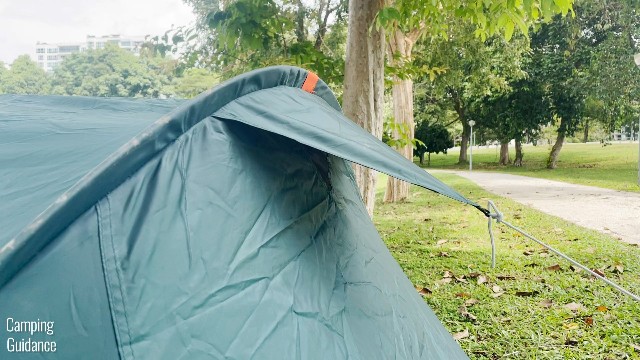
So, I’d recommend going for the Fresh and Black model, if you want to buy the exact same 2 Seconds tents that I rain-tested for this review.
The Fresh and Black model has 2 huge rainfly vents (1 at each length of the tent), and I could leave these completely open in the heavy rain. On top of that, I could even shut these vents from the inside of the tent, just in case water got into my tent.
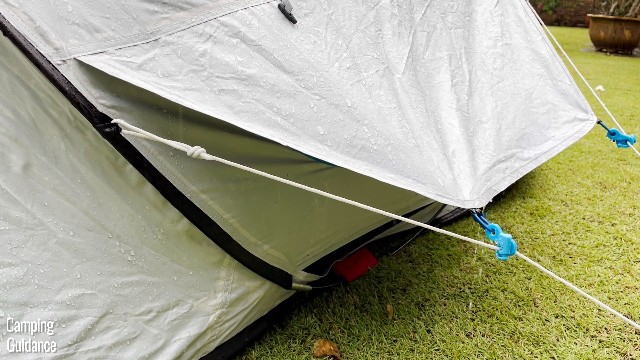
Sadly though, these 2 Seconds tents I rain-tested here do not have vestibules.
Pro-Tip: So, I’d recommend upgrading to the 2 Seconds Easy instead, which is Decathlon’s much newer model when it comes to these 2 Seconds tents. This 2 Seconds Easy has a small vestibule at the front of the tent that you can fit wet gear and dirty shoes.
One thing I didn’t quite like about these tents is the fact that they come with thin fiberglass tent poles. (These are pre-attached poles.) This is the only waterproof tent in this review that has fiberglass poles, which means it won’t stand up against wind as well as the others (which all have aluminum tent poles instead).
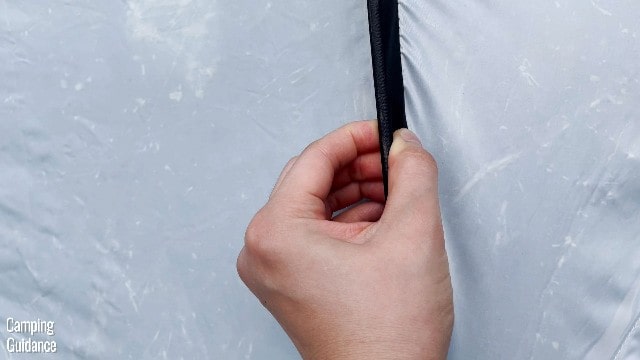
Nevertheless, Decathlon did test these 2 Seconds tents “in wind speeds of up to 30mph“, so at least we know the limit here. That’s nothing like The North Face Wawona, but still nothing to scoff at.
But overall, the fiberglass poles are needed to allow this tent to literally ‘pop up’ in 30 seconds (not 2 seconds, despite the name – I timed myself doing so!), so I’d still check this tent out if you need an instant setup or pop up tent. This Quechua 2 Seconds Fresh and Black is, by far, the best one I’ve tested in heavy rain.
Check out the Fresh and Black:
Check out the Fresh and Black EASY:
And with that, here are all my recommendations for the best waterproof tents:
The North Face Wawona 6: Overall Best Waterproof Tent & Best Waterproof Tent for Summer
REI Base Camp 6: Best Shoulder-Season Waterproof Tent
REI Wonderland 6: Best Waterproof Cabin Tent
Teton Sports Mountain Ultra: Best Budget Waterproof Tent (for Camping & Backpacking)
Quechua 2 Seconds Fresh and Black: Best Waterproof Pop Up Tent
Quechua 2 Seconds Fresh and Black EASY: Best Waterproof Instant Tent (this is an upgraded pick from the previous Fresh and Black model)
How to Pick the Best Waterproof Tent for Yourself
Now, here are some of the most important things that I looked at when picking some of the best waterproof tents for this review. These are, mainly, the:
Length of the rainfly
Thoroughness of seam taping
Amount of vestibule space
Amount of ventilation
Presence of a tub floor
Hydrostatic head rating
Tent Type – Car Camping Tent or Backpacking Tent
Before I get into the features to look for in a waterproof tent, here’s one thing that I want to mention.
All of the 5 waterproof tents above are mainly car camping tents for camping trips. The only exception is the Teton Sports Mountain Ultra, which can be used as a backpacking tent for short trips.
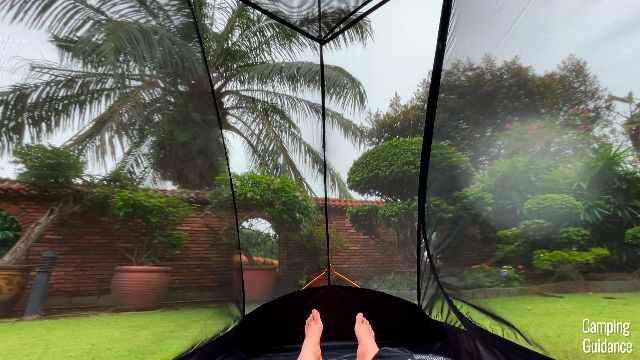
And that’s because I go on car camping trips way more than I go backpacking, so my ‘expertise’ (if you can even call it that) is mainly in car camping tents.
It’s on my bucket list to go backpacking more often, and when I do, I’ll update this review to also include the best waterproof backpacking tents.
Best Waterproof Backpacking Tent: MSR Hubba Hubba NX 2
I do have one of the best backpacking tents though, and that’s the MSR Hubba Hubba NX 1.
But as you might have guessed, I would usually recommend the 2-person model for more vestibule space and overall comfort (spoken like a true car-camper lol).
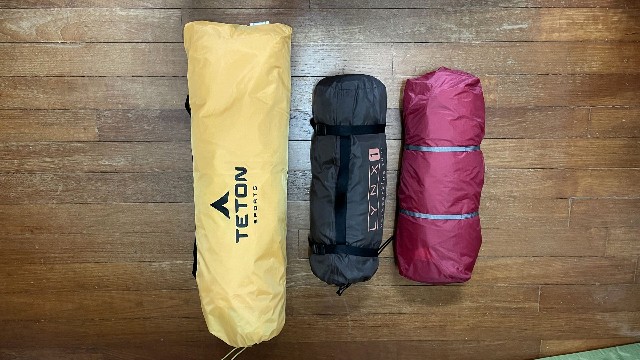
This waterproof tent has so many awesome features:
The minimum weight clocks in at only 3.6lbs.
2 big vestibules for storing wet camping gear
2 large StayDry doors
1,200mm Durashield-coated rainfly
3,000mm Durashield floor fabric, complete with tub floor
Adjustable rainfly
Properly-angled rainfly vent
I’ll update this section again when I properly test this tent.
Check out the MSR Hubba Hubba NX:
Now, what are the exact features to look out for when choosing a waterproof tent?
Rainfly Length
First, I like to look at the length of each tent’s rain fly.
I typically like full-length rainflies over partial rainflies when it comes to waterproof tents.
Full-length rainflies extend all the way to the ground, leaving only a little gap at the bottom for some ventilation. This provides way more protection from the rain.

Seam Taping
I also like to look at the thoroughness of the seam taping in each tent.
The most vulnerable seams are the seams that are near the bottom of the tent, such as the corner seams on the tent floor, and the top of the tub floor seams. These tend to leak much more easily than seams near the top of the tent.
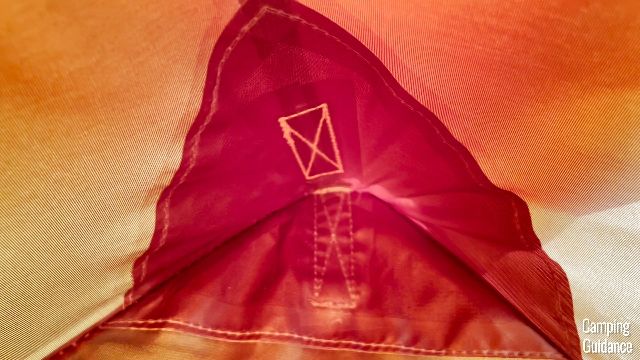
I also noticed that more expensive tent brands usually have much better factory taping than budget tent brands. For example, The North Face Wawona was perfectly taped all around the tent, while Coleman’s factory taping can sometimes be sub-par.

Vestibule Space
Another feature is whether the tent has a vestibule for storing any wet gear you may have. One of my pet-peeves is to take wet gear (especially dirty shoes!) into the inner tent. I really don’t like that, because I like to keep most of my gear (especially my sleeping bag!) dry.
So, for me, it’s important to have a vestibule area to store all this wet gear for rainy days. The more storage space, the better.

And if the vestibule has enough of a spacious interior, it can also double as a living room on hot days.
Ventilation
A good waterproof tent also needs to have some ventilation on rainy days. This usually comes in the form of vents around the tent.
Usually, the bigger the vents, the more ventilation there will be.
And another plus is if these vents can be opened and shut from the inside of the tent. If it cannot be shut from the inside, you will have to run out in the rain and shut them while getting drenched, which will not be a pleasant experience.
Bathtub Floor
Another feature to take note of is the bathtub floor (this is also just called a ‘tub floor’). It’s a flooring that curves upwards around the edges of the tent to provide more rain protection.
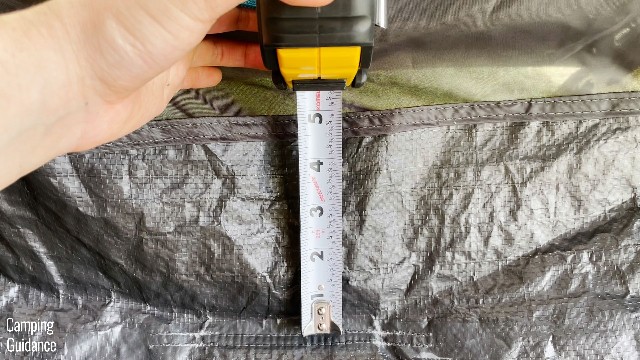
It’s called a bathtub floor because it resembles a bathtub.
This isn’t as crucial a feature as the other few that I mentioned before this. In fact, only the Teton Sports Mountain Ultra and Quechua 2 Seconds tents had these bathtub floors. The other 3 bigger family tents from The North Face and REI didn’t.
But if there isn’t a tub floor in a tent, it needs to at least have thorough taping to make up for it.
Hydrostatic Head Rating (Waterproof Rating)
A hydrostatic head (HH) rating is a measure of ‘waterproofed-ness’ in a waterproof tent. Usually, the higher the waterproof rating, the more waterproof a tent is.
Pro-Tip: I typically like to look for a rating of at least 1,000 millimeters (more info down below).
Frequently Asked Questions (FAQs)
And here are some burning questions that may be on your mind.
Are tents really waterproof?
Tents are usually waterproof up to a certain degree. They are not completely impermeable, and will eventually let a little bit of water in after a period of time. This period of time can range from minutes, to days. Usually, more waterproof tents stay dry for longer.
Tents are, after all, made of fabric, which isn’t impermeable to water.
For example, even my favorite waterproof tent – The North Face Wawona 6 – started to get a little damp in the back wall after 3 days of rain.
RELATED: Are Tents Waterproof? Is YOUR Tent Waterproof?
Which tents are NOT waterproof?
I’ve found that budget-friendly tents tend to not be quite as waterproof.
Pro-Tip: If you found both my budget tents above (the Quechua 2 Seconds and Teton Sports Mountain Ultra above) a little out of your budget, and you’re thinking of going for an even more budget camping tent (like Core Equipment tents, Coleman tents, or Ozark Trail tents), these are not waterproof at all.
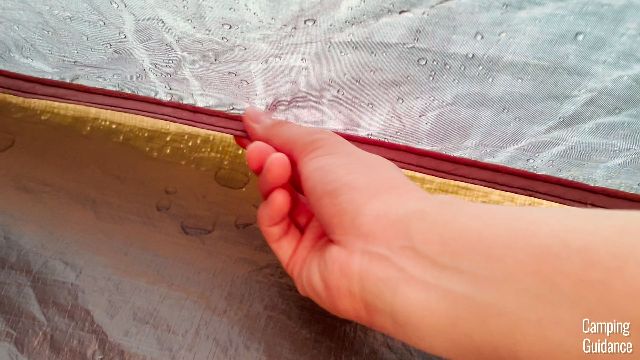
I found that camping tents from these brands tend to have only partial coverage rainflies, inverted seams instead of sealed seams, and less water-resistant coatings with lower hydrostatic head ratings.
Waterproof V.S. water-resistant tents
Waterproof tents generally have a rating of at least 1,000 millimeters, and anything less than this is just water-resistant, and not waterproof.
For example, Core tents have a 600-millimeter rating, so, only water resistant.
Coleman tents vary from 450 to 1,000 millimeters, but most of them are usually on the lower end of 450 millimeters, so again, only water resistant.
And I have no idea what the rating of Ozark Trail tents are.
| Brand | HH Rating | Heavy Rain Test |
|---|---|---|
| Core Equipment | 600mm | ~30-60 mins |
| Coleman | 450-1,000mm | ~30-60 mins |
| Ozark Trail | None | 0 mins |
So, for my Coleman and Core tents, I noticed that the tent’s fabric (specifically, the tent walls) will get damp and start leaking after about 30 minutes to an hour of heavy rain. And Ozark Trail tents will get drenched almost immediately in heavy rain.
So, I would not call any of these a ‘waterproof camping tent’. If you happen to have a sleeping bag up against the tent walls, it will soak through entirely, which really sucks (trust me).
On the other hand, for all the actually waterproof (and not just water-resistant) tents in this review, none of their fabric got damp even after hours of heavy rain.
How long do tents stay waterproof?
Tents will usually keep its waterproof capabilities for between 1 to 2 years. After this amount of time, the polyurethane coating will gradually wear off, and the seam taping will start peeling off.
RELATED: How Long Do Tents Stay Waterproof?
For example, this is what my old Quechua tents’ seam taping looked like after a couple of years. Notice that it has peeled off a little bit?
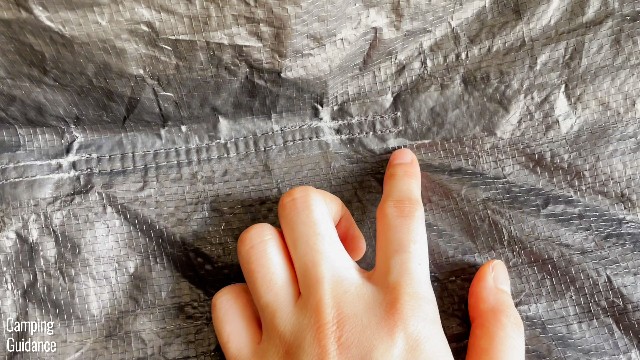
This is one of the floor seams, which started to allow water into the tent especially during the light flooding test that I did on this tent.
As such, to keep a tent waterproof, you will need to do some prep work (coating & seam sealing) on your own at least once a year (this is the most ideal).
Why You Can Trust Me
I bought all the tents in this review with my own savings (I spent more than $1,500 on just the 5 tents above!), and tested them against not just light rain, not just moderate rain, but heavy rain as well.
And I didn’t just test each one of them in 1 hour of heavy rain, but some of the tents above have gone through even a whopping 3 days of rain, plus some flooding as well.
I also looked at all of the waterproofing capabilities (rainfly, seam taping, etc.) as objectively as possible, which I’m able to do because I buy all my tents with my own money.
And with all the time, money, and experience, here’s what I can safely recommend to you for your camping trip:
The North Face Wawona 6: Overall Best Waterproof Tent & Best Waterproof Tent for Summer
REI Base Camp 6: Best Shoulder-Season Waterproof Tent (possibly a great four-season tent in not-so-cold winters)
REI Wonderland 6: Best Waterproof Cabin Tent
Teton Sports Mountain Ultra: Best Budget Waterproof Tent (for Camping & Backpacking)
Quechua 2 Seconds Fresh and Black: Best Waterproof Pop Up Tent
Quechua 2 Seconds Fresh and Black EASY: Best Waterproof Instant Tent (this is an upgraded pick from the previous Fresh and Black model)
I hope this helps, and feel free to reach out to me on my YouTube channel if you have any questions. I’m only a YouTube comment away, and I do my best to answer everyone.
